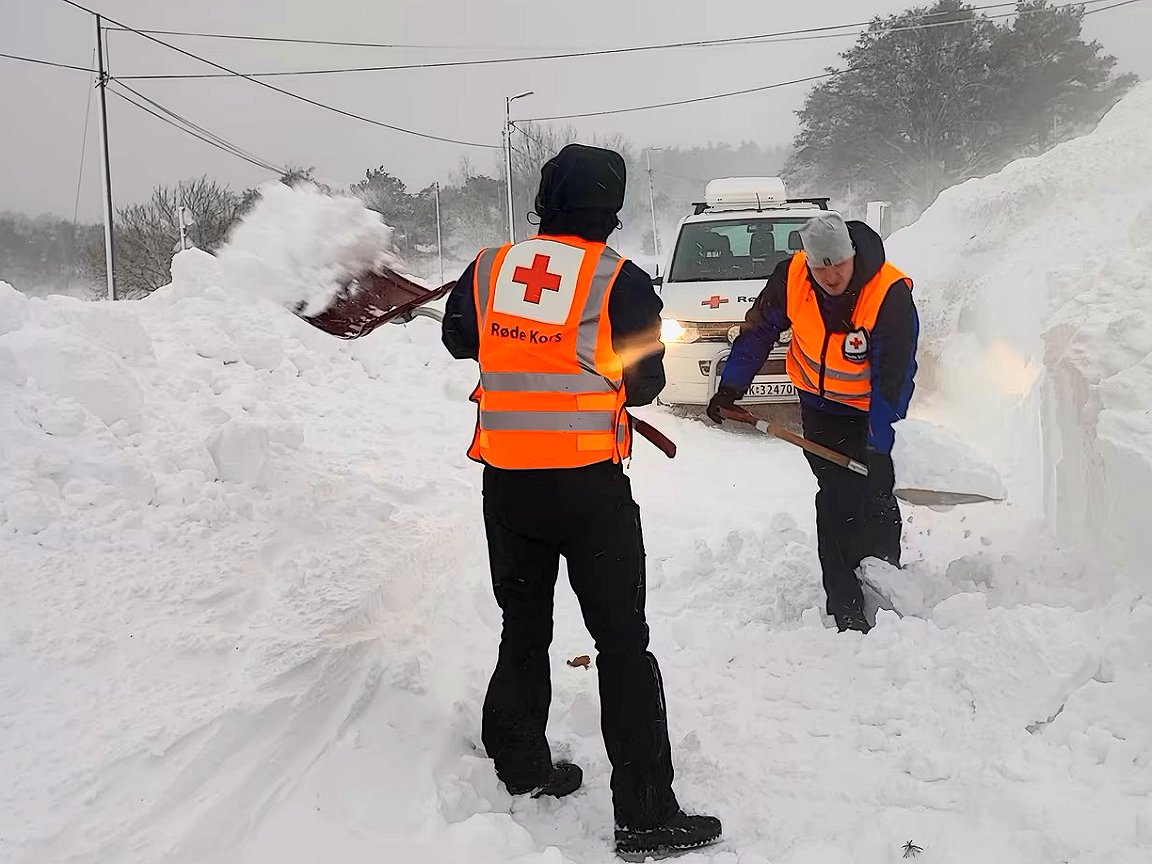
New studies: Scandinavia freeze less likely, Black Sea storm-intensity more so, with climate change

By the Climate Centre
Two new studies by World Weather Attribution scientists this week have demonstrated that climate change is making the most extreme cold in Scandinavia and Finland less likely and precipitation from winter storms in Eastern Europe even more intense.
Earlier this month, Arctic air pushed the temperature in the northern Swedish village of Vittangi down to minus 44.6°C – the coldest recorded in Sweden, Finland or Norway in the 21st century; a station near Oslo recorded minus 31.1°C.
But combining observations and models, the WWA study group – including scientists from universities and meteorological agencies in Finland, France, the UK and the US – found that both the five-day coldwave and one-day extreme temperature they analysed would have been yet 4°C colder in a world without climate change.
In a press release for the study issued today, they write: “Climate change is making … a five-day coldwave five times less likely and single-day cold extremes 12 times less likely.”
“If the global temperature increase reaches 2°C, similar five-day coldwaves will become another 2.5°C less cold, while similar single-day extremes will become another 2°C less cold. Both events will continue to become less frequent as the climate warms.”
‘Constant freezing and thawing’
Erik Kjellström, Professor in Climatology at the Swedish Meteorological and Hydrological Institute, said: “While winters are becoming milder, Norway, Sweden and Finland are still experiencing coldwaves …
“The constant freezing and thawing of water comes with challenges for infrastructure and road safety. It can also create a more layered snow pack that increases the risk of avalanche and reduces access to food for reindeers and other animals.”
The Climate Centre’s Dorothy Heinrich, an adviser on climate risk and a study author, said: “Like all other extreme-weather events, protecting the most vulnerable people during coldwaves is crucial.
“Older people, children, people who live in poor housing, and people who are experiencing energy poverty or homelessness are particularly vulnerable to these cold temperatures.”
Wind speed
Yesterday, meanwhile, WWA issued another study which said the heavy rain and snowfall from Storm Bettina that hit the Black Sea region in November was made twice as likely by climate change.
Bettina – also known as Storm Oliver – brought heavy snow to Bulgaria, Moldova, Romania and Ukraine, and severe rainfall across much of eastern Ukraine and Türkiye.
At least 23 people died, mostly in Ukraine, while more than 2.5 million people were affected by power cuts, damage to infrastructure, and disruption to transport.
By looking at the historical data, the researchers estimated that, at current levels of global warming, wind speeds such as those associated with Storm Bettina can be expected about once every three years, while similarly heavy precipitation happens on average once every 20 years; climate change made the precipitation about 5 per cent more intense and twice as likely.
More precipitation from winter storms was falling as rain instead of snow, which can cause more severe flooding.
The influence of climate change on wind was less clear: the data indicates that strong winds are becoming less frequent but climate models project increased frequency of strong winds if warming continues.
Norwegian Red Cross volunteers in the southern Agder region were called out around 150 times in a single 24-hour period earlier this month to assist people facing what was described as “snow chaos”. But it would probably have been still more severe without climate change, scientists said this week. (Photo: Norwegian Red Cross)